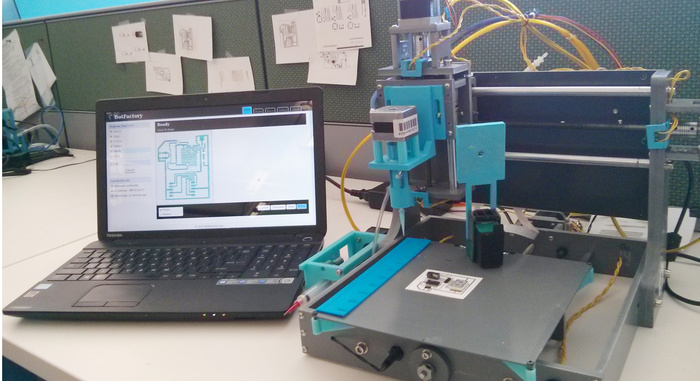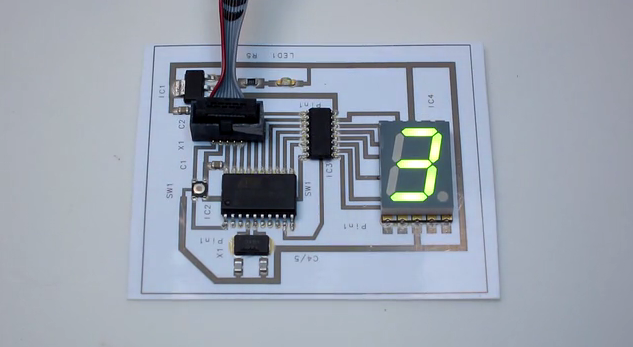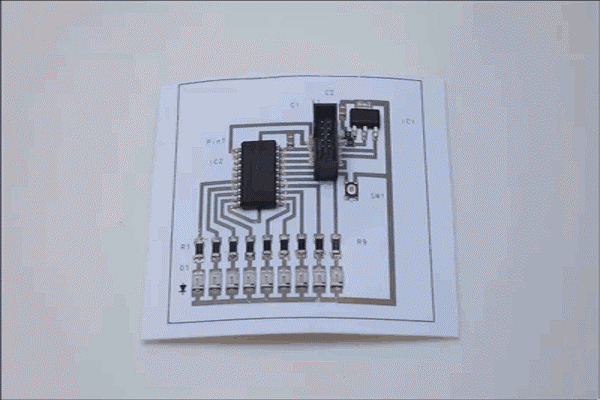
Household 3D-printers are convenient, fabricating all manner of necessary knick-knacks from broken shower curtain rings to toothpaste tube rollers. A team of engineers from NYU Polytechnic School of Engineering decided there was a need to impart this same manner of convenience into the world of electric circuit design. And so, they created the Squink, a desk-side, personal factory for prototyping electronic circuits by printing and assembling circuits onto flexible or rigid substrates.

Squink sets out to demonstrate that building electronics needn’t be a compromise between cost, flexibility, and time. Instead of having to spend hours fiddling around with messy hand-made printed circuit boards and acid, Squink lets users test ideas on the spot within as little as 30 minutes. Squink begins by printing the conductive ink in place of the copper trace from Gerber or png files. Next it applies conductive glue dots onto the position where the components will be placed, aligns them, and sets them down in the glue. Circuits can be printed on either photopaper, glass, or any manner of insulating material that can function in their place.

To emphasis this notion of print-and-play, the Squink can be accessed through Wi-Fi, USB, or Ethernet cable. After creating or downloading the design file, user will upload them to the Squink and print; easy and less expensive than dealing with a large manufacturer, tailored for high volume productions, or the messiness of home-brewing. Squink is especially useful for making flexible boards or boards that use different materials, the developers claim.
The device aims to be as accessible as possible, going as far as to include an online community that encourages all users ─ whether expert electronic hobbyist or amateur student alike ─ to share design files. Bringing projects to life is as easy as downloading a Gerber file and activating the printer. Nabbing one of these devices will require a $2,999 investment, the $2,499 early bird units are sold out at the time of writing this. The refillable ink and glue cost $100 a pop and enough to produce 50 boards at the price of four dollars a board. Visit Squink’s Kickstarter page to procure your own unit; with 29 days to go the printer has raised $38,797.
Via Kickstarter
Advertisement
Learn more about Electronic Products Magazine





